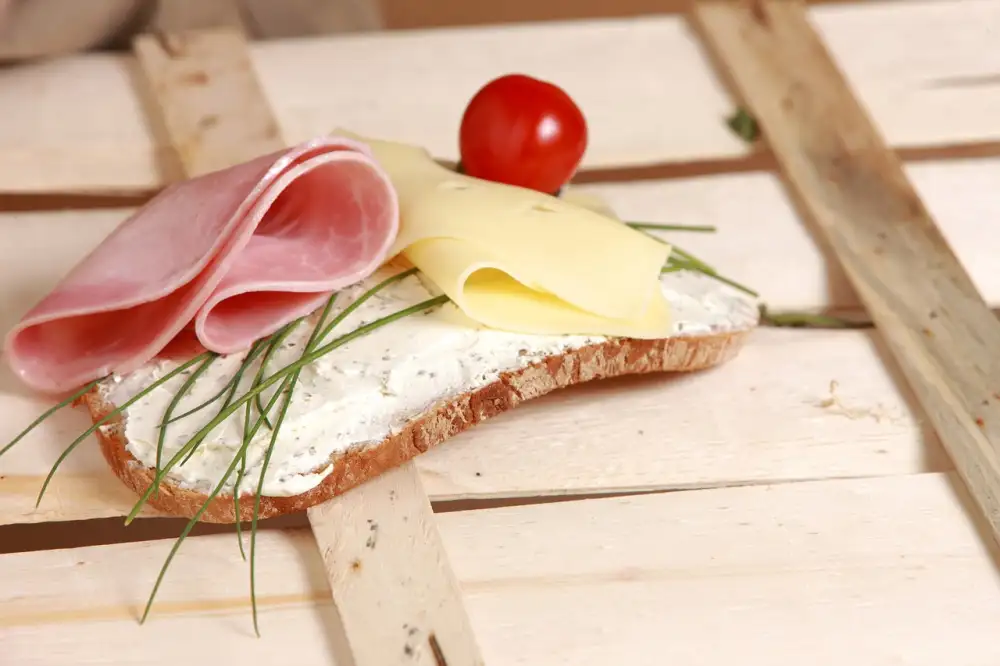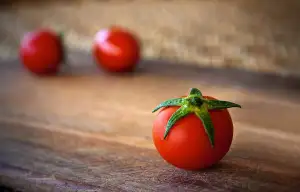Ham Heaven: Unleash Your Culinary Skills with Delectable Ham Recipes

Introduction to Ham
Ham, a versatile and flavorful meat, has been enjoyed by food enthusiasts for centuries. Derived from the hind leg of a pig, ham is known for its rich taste and tender texture. Whether it's baked, grilled, or used as an ingredient in various dishes, ham adds a delicious depth of flavor that elevates any meal. In this article, we will explore the different types of ham, the curing and smoking process, popular ham recipes, cooking tips, health benefits, serving suggestions, where to buy quality ham, and more. So get ready to unleash your culinary skills and embark on a journey to ham heaven!
Types of Ham
When it comes to ham, there are several types to choose from, each with its own unique flavor and texture. The most common types of ham include:
1. Honey Baked Ham: This type of ham is known for its sweet and sticky glaze. It is typically spiral-cut and has a tender and juicy texture.
2. Black Forest Ham: Originating from Germany's Black Forest region, this ham is dry-cured with a blend of spices, giving it a distinct smoky flavor.
3. Prosciutto: Hailing from Italy, prosciutto is made from the hind leg of a pig that has been dry-cured for months. It is thinly sliced and has a delicate, salty taste.
4. Country Ham: Popular in the southern United States, country ham is salt-cured and aged for several months or even years. It has a strong, savory flavor and a firm texture.
5. Serrano Ham: Another Spanish favorite, serrano ham is made from white pigs that are fed on acorns. It has a rich and nutty flavor with hints of sweetness.
These are just a few examples of the many types of ham available. Each variety brings its own unique taste to dishes and can be used in various recipes to add depth and flavor.
Curing and Smoking Process
Curing and smoking are two essential processes in preparing ham. Curing involves the use of salt, sugar, and other seasonings to preserve the meat and enhance its flavor. The ham is coated with a mixture of these ingredients and left to rest for a specific period, allowing the flavors to penetrate the meat.
After curing, the ham is then smoked. This process adds a distinct smoky flavor to the meat and helps in further preservation. Traditionally, hams were smoked over hardwoods like hickory or applewood, which impart a rich and aromatic taste.
The length of time for both curing and smoking varies depending on the type of ham being prepared. Some hams require several weeks or even months of curing and smoking to achieve their desired flavor profile.
Curing and smoking not only enhance the taste but also contribute to the texture of the ham. The combination of salt, sugar, and smoke creates a unique balance that results in tender, juicy, and flavorful meat.
It's important to note that curing and smoking should be done under controlled conditions to ensure food safety. Proper temperature control is crucial during these processes to prevent bacterial growth.
By understanding the art of curing and smoking, you can unlock a world of delicious possibilities with ham. Whether you prefer a sweet glazed ham or a savory smoked variety, mastering these techniques will allow you to create mouthwatering dishes that will impress your family and friends.
Popular Ham Recipes
Ham is a versatile ingredient that can be used in a variety of delicious recipes. Here are some popular ham recipes to inspire your culinary adventures:
1. Ham and Cheese Quiche: This savory dish combines diced ham, cheese, and eggs baked in a flaky pie crust. It's perfect for brunch or a light dinner.
2. Honey Glazed Ham: A classic recipe that never fails to impress. The ham is coated with a sweet and sticky glaze made from honey, brown sugar, and spices, then baked to perfection.
3. Ham and Bean Soup: This hearty soup is made with leftover ham bone, beans, vegetables, and flavorful herbs. It's a comforting dish that's perfect for chilly days.
4. Ham and Pineapple Skewers: These tasty skewers feature chunks of ham and pineapple grilled to perfection. They make a great appetizer or addition to any barbecue spread.
5. Ham and Swiss Sliders: These mini sandwiches are made with sliced ham, Swiss cheese, and buttery rolls. They're perfect for parties or as a quick lunch option.
6. Ham Fried Rice: A delicious way to use up leftover ham, this fried rice is packed with flavor from soy sauce, vegetables, and scrambled eggs.
7. Ham and Potato Casserole: Layers of sliced potatoes, diced ham, cheese sauce, and breadcrumbs come together in this comforting casserole dish.
These popular recipes showcase the versatility of ham and how it can elevate any meal. Whether you're looking for breakfast options or hearty main dishes, there's something here for everyone to enjoy!
Tips for Cooking with Ham
Tips for Cooking with Ham:
1. Choose the right type of ham: When cooking with ham, it's important to select the right type based on your recipe. For example, if you're making a soup or stew, opt for a bone-in ham for added flavor. If you're using ham as a topping or in sandwiches, sliced deli ham works best.
2. Trim excess fat: Before cooking, trim any excess fat from the ham to prevent it from becoming greasy. Leave a thin layer of fat to enhance the flavor and moisture.
3. Enhance flavors with glazes: Glazing your ham can add a delicious sweet and savory element. Popular glaze options include honey mustard, brown sugar, pineapple juice, or maple syrup. Apply the glaze during the last 30 minutes of cooking for a caramelized finish.
4. Use low and slow cooking methods: To ensure tender and juicy ham, cook it at a low temperature over an extended period of time. This allows the flavors to develop fully without drying out the meat.
5. Baste regularly: While cooking, basting your ham with its own juices or glaze helps to keep it moist and infuse more flavor into the meat.
6. Let it rest before slicing: After removing the ham from the oven or grill, let it rest for at least 10-15 minutes before slicing. This allows the juices to redistribute throughout the meat, resulting in a more flavorful and tender end product.
7. Get creative with leftovers: Don't let any leftover ham go to waste! Use it in omelets, quiches, casseroles, or sandwiches for delicious meals throughout the week.
Remember these tips when cooking with ham to unleash its full potential and create mouthwatering dishes that will impress your family and friends!
Health Benefits of Ham
Ham may be a delicious indulgence, but it also offers some surprising health benefits. Packed with protein, ham provides essential amino acids for muscle growth and repair. It is also a good source of vitamins and minerals, including vitamin B12, zinc, and selenium. These nutrients support immune function and help maintain healthy skin. Additionally, ham contains iron, which is crucial for red blood cell production. However, it's important to consume ham in moderation due to its high sodium content. Opting for leaner cuts and trimming excess fat can help reduce the overall sodium intake.
Ham Pairings and Serving Suggestions
Ham Pairings and Serving Suggestions:
Ham is a versatile ingredient that can be paired with a variety of flavors to create delicious and satisfying dishes. Here are some popular pairings and serving suggestions to enhance your culinary experience with ham:
1. Fruit: The sweet and salty combination of ham pairs perfectly with fruits like pineapple, apples, peaches, or figs. Serve thinly sliced ham alongside a fruit platter for a refreshing appetizer or create a savory-sweet ham and pineapple skewer for a delightful main course.
2. Cheese: Ham and cheese are a classic combination. Opt for creamy cheeses like brie or camembert to complement the saltiness of the ham. Create mouthwatering sandwiches by layering ham, cheese, and your favorite condiments between slices of crusty bread.
3. Eggs: Ham and eggs are a match made in heaven. Whip up a hearty breakfast by adding diced ham to scrambled eggs or omelets. For an elegant brunch dish, try making eggs Benedict with poached eggs, Canadian bacon (a type of ham), and hollandaise sauce.
4. Pasta: Incorporate diced or shredded ham into pasta dishes for added flavor and texture. Create a comforting carbonara by tossing cooked spaghetti with sautéed onions, garlic, cream, Parmesan cheese, and diced ham.
5. Salads: Add depth to your salads by including sliced or cubed ham as a protein-rich topping. It pairs well with greens like spinach or arugula, along with ingredients such as tomatoes, cucumbers, hard-boiled eggs, and crumbled feta cheese.
6. Sandwiches: Ham is a staple in sandwiches due to its rich flavor and versatility. Layer thinly sliced ham on your favorite bread along with lettuce, tomato, mayonnaise, mustard, or any other condiments you prefer.
7. Appetizers: Get creative with bite-sized appetizers featuring ham. Wrap asparagus spears or melon slices with thin strips of ham for an elegant and flavorful hors d'oeuvre. Alternatively, stuff mushroom caps with a mixture of ham, cheese, and breadcrumbs for a delicious bite.
Remember to experiment with different flavors and textures to find your favorite ham pairings. Whether it's in salads, sandwiches, pasta dishes, or appetizers, ham can elevate any meal and add a touch of savory goodness. Enjoy exploring the endless possibilities that ham has to offer!
Where to Buy Quality Ham
When it comes to buying quality ham, there are a few options to consider. One of the best places to find high-quality ham is at your local butcher shop or specialty meat market. These establishments often source their ham from reputable suppliers and can provide you with expert advice on the different types and cuts available.
Another option is to purchase ham online. Many online retailers offer a wide selection of hams, ranging from traditional cured hams to specialty varieties. Make sure to read customer reviews and check for certifications or awards that indicate the quality of the product.
If you prefer convenience, most grocery stores also carry a variety of ham options. While these may not always be as high in quality as those found at specialty shops, you can still find decent options if you know what to look for. Check the packaging for information on the sourcing and curing process, and opt for brands that prioritize natural ingredients and sustainable practices.
Lastly, consider purchasing directly from local farmers or attending farmers' markets in your area. This allows you to support small-scale producers who often take great care in raising their animals and producing high-quality products.
No matter where you choose to buy your ham, remember that quality is key. Look for hams that have been properly cured and smoked, with no added fillers or artificial ingredients. By investing in a good-quality ham, you can ensure that your culinary creations will be nothing short of delicious.
Conclusion
In conclusion, ham is a versatile and delicious ingredient that can elevate any dish. Whether you prefer the smoky flavor of a cured and smoked ham or the delicate sweetness of a honey-glazed ham, there are endless possibilities for creating mouthwatering recipes. From classic dishes like ham and cheese sandwiches to innovative creations like ham-stuffed mushrooms, your culinary skills will truly shine when you incorporate ham into your cooking. So go ahead, unleash your creativity in the kitchen and indulge in the heavenly taste of ham!
Published: 14. 11. 2023
Category: Food



